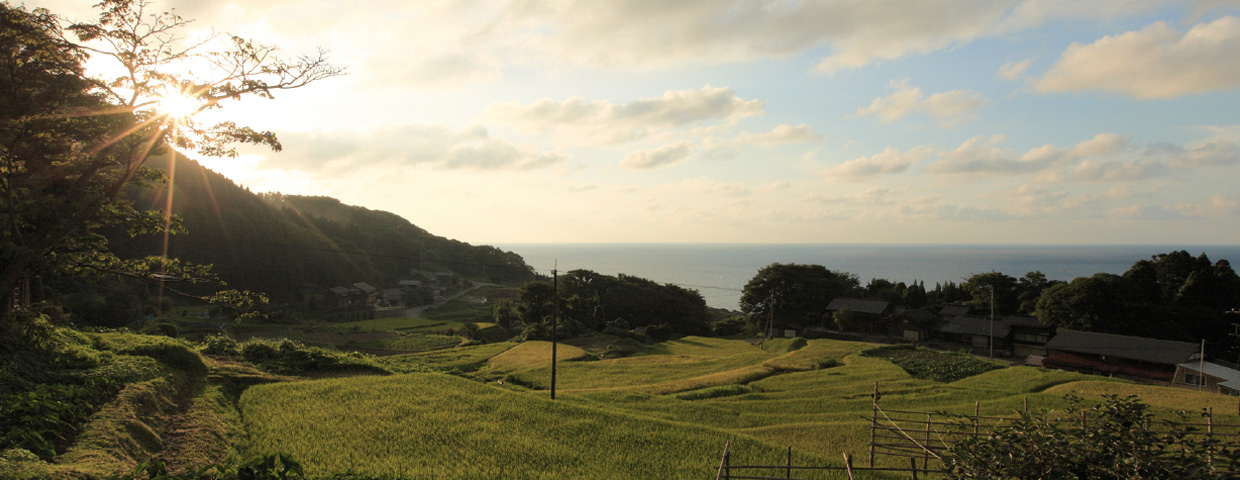The Satoyama Initiative
Introduction
The Satoyama Initiative is a global effort to realize "societies in harmony with nature" through landscape approaches to biodiversity conservation and human well-being. In particular, the focus is on the concept of "socio-ecological production landscapes and seascapes" (SEPLS), meaning that sustainable management at the landscape level can help to secure ecosystem services and conserve biodiversity, and therefore support well-being for humans and nature. The Initiative was started through a joint collaboration between the Ministry of the Environment of Japan (MOEJ) and the United Nations University Institute for the Advanced Study of Sustainability (UNU-IAS).
Conceptual Diagram of the Satoyama Initiative

1.Vision
The vision of the Satoyama Initiative is to realize societies in harmony with nature, meaning human communities where the maintenance and development of socio-economic activities align with and support natural processes. Through sustainable use and management of resources including biodiversity, human societies must find ways to enjoy a stable supply of ecosystem services and continue to exist in a way that does not damage the natural environment. Landscape approaches to this kind of sustainable management have gained increasing attention in recent years, and are at the heart of the Satoyama Initiative's approach.
2.Three-fold approach
The "three-fold approach" of the Satoyama Initiative is intended to maintain and rebuild landscapes and seascapes in which land and natural resources are used and managed in a more sustainable manner by:
- Consolidating wisdom on securing diverse ecosystem services and values,
- Integrating traditional ecological knowledge and modern science to promote innovations, and
- Exploring new forms of co-management systems or evolving frameworks of “commons” while respecting traditional communal land tenure.
Understanding diverse ecosystem services and values that give rise to human well-being is an indispensable aspect of this approach, as is the consolidation of wisdom on securing these services. It is also critical to create synergy between traditional knowledge and modern science in order to promote necessary innovations. Exploring new forms of co-management systems or evolving frameworks of “commons,” while respecting traditional communal land tenure where necessary, is vital to the process. This includes not only landowners and local residents, but also various parties who also benefit from the relevant ecosystem services.
3.Six Ecological and Socioeconomic Perspectives
In following the above approach, the maintenance and rebuilding of landscapes and seascapes in various localities – in other words, putting the sustainable use and management of natural resources into practice – should entail six ecological and socio-economic perspectives:
- Resource use within the carrying capacity and resilience of the environment
- Cyclic use of natural resources
- Recognition of the value and importance of local and indigenous traditions and culture
- Multi-stakeholder participation and collaboration in sustainable and multi-functional management of natural resources and ecosystem services
- Contributions to sustainable socio-economies including poverty reduction, food security, sustainable livelihood and local community empowerment
- Improved community resilience to achieve multiple benefits, including ecological, social, cultural, spiritual and economic benefits, inter alia through ecosystem-based approaches for climate change mitigation and adaptation activities
4. History of the Satoyama Initiative
From its inception, the Satoyama Initiative has taken a global perspective and sought to consolidate expertise from around the world regarding the sustainable use of resources in SEPLS. The Initiative’s concept was developed in a series of meetings and consultations. One important milestone came in January 2010, when the Global Workshop on the Satoyama Initiative was held at the Headquarters of the United Nations Educational, Scientific and Cultural Organization (UNESCO) in Paris. The Global Workshop built on two preparatory workshops held in Asia, the first in Tokyo, Japan in July 2009, and the second in Penang, Malaysia in October 2009. The objectives of the Global Workshop were to discuss the Satoyama Initiative’s concept and define the elements of activities to be included in the Initiative. The “Paris Declaration on the Satoyama Initiative” was one of the major outcomes of the Paris workshop. It was subsequently submitted to the CBD’s fourteenth meeting of the Subsidiary Body on Scientific, Technical and Technological Advice (SBSTTA-14) as one of the official documents of the meeting, and became a fundamental document that led to the Initiative’s recognition during the tenth meeting of the Conference of the Parties to the Convention on Biological Diversity (CBD COP 10), held in Nagoya, Japan in 2010.
At CBD COP10, Decision X/32 was adopted recognizing the Satoyama Initiative as a “potentially useful tool to better understand and support human influenced natural environments for the benefit of biodiversity and human well-being.” The International Partnership for the Satoyama Initiative (IPSI) was established on 19 October 2010, also during CBD COP 10, to promote the activities identified by the Satoyama Initiative and to share relevant information and experiences. A total of 51 organizations entered into partnership as founding members of IPSI.



